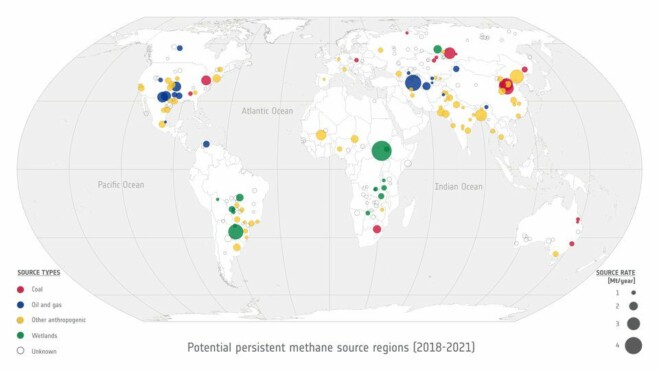
 Data from the Copernicus Sentinel-5P mission was used to study and estimate methane emissions at 217 potential locations, as shown on the accompanying map.
Data from the Copernicus Sentinel-5P mission was used to study and estimate methane emissions at 217 potential locations, as shown on the accompanying map.
The paper, published in Atmosphere, Chemistry and Physics, focused on sources that emit methane gradually over time, in contrast to ‘super-emitters,’ typically oil and gas operations, coal mines or poorly managed landfills, which release disproportionately large amounts of methane but not on a continuous basis.
Sentinel-5P, the result of a close collaboration between ESA, the European Commission, the Netherlands Space Office and industry, carries the state-of-the-art Tropomi instrument, which is used to map trace gases including methane.
The study is based on a new methane concentration dataset and an algorithm developed by the University of Bremen as part of the ESA Climate Change Initiative Greenhouse Gas Project as well as the ESA Earth System Science Hub projects, Methane CAMP and SMART-CH4.
Researchers analyzed concentrations of methane (parts per billion) for 2018–2021. A location was classified as a potential persistent emitter if levels of methane were consistently higher than the surrounding area.
Image Credit: ESA Climate Change Initiative GHG Project (contains modified Copernicus Sentinel data, 2024)
